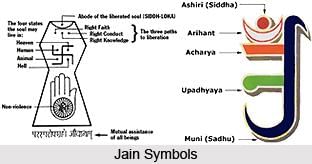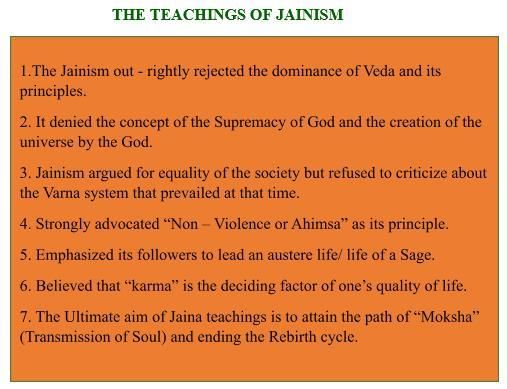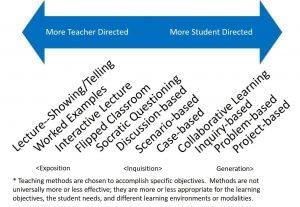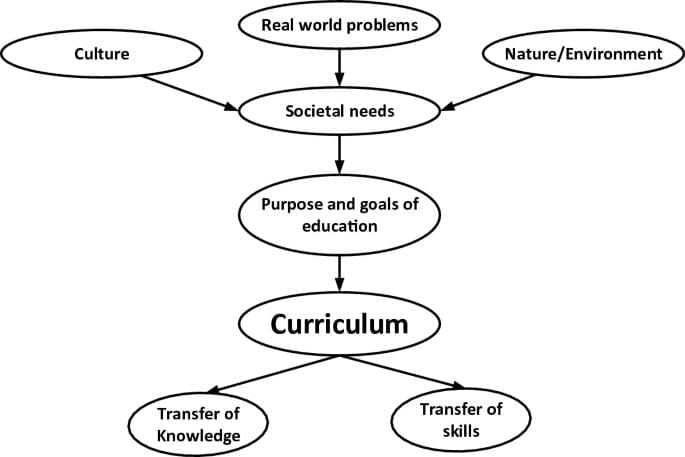Contribution of Indian School of Philosophy - 4 Chapter Notes | Crash Course for UGC NET Education PDF Download
| Table of contents |

|
| Path of Liberation for Jaina |

|
| Teachings of Jainism |

|
| Methods of Teaching |

|
| Nature of Education |

|
| Contribution of Dayanand |

|
Core Principles of Jainism
Non-Violence (Ahimsa)
- Non-violence, known as ahimsa, is the most distinctive and well-known aspect of Jaina religious practice.
- Jains understand and implement ahimsa in a more radical, scrupulous, and comprehensive manner than in other religions.
- Non-violence is considered the most essential religious duty for everyone.
- A thorough application of non-violence to everyday activities, especially food, is a significant hallmark of Jaina identity.
- The strictest forms of Jaina diet are practiced by ascetics. For Jains, lacto-vegetarianism represents the minimal obligation.
- Food containing even small particles of dead animal bodies or eggs is absolutely unacceptable.
- Jains make considerable efforts in daily life not to injure plants any more than necessary.
Self-Control
- Jainism encourages spiritual development through the cultivation of personal wisdom and reliance on self-control through vows.
- Jains accept different levels of compliance for ascetics and lay followers.
Soul and Karma
- According to Jains, souls are intrinsically pure and possess qualities of infinite knowledge, perception, bliss, and energy.
- However, these qualities are obstructed due to the soul's association with a substance called Karma over an eternity of beginningless time.
Jaina Philosophy
Anekantavada and Syadvada
- Jaina metaphysics is based on Anekantavada, which means the doctrine of the many-sidedness of reality. According to this, all objects of knowledge are manifold and have infinite qualities and relations that distinguish them from one another.
- Every object is defined by its positive and negative characteristics, and only an omniscient being can know an object fully.
- Ordinary people can only know some qualities of an object, as human knowledge is limited and relative. This theory is known as Syadvada.
- Anekantavada and Syadvada are two aspects of the same teaching, which is relativistic and pluralistic. Anekaritavada refers to the metaphysical side that reality has innumerable characteristics, while Syadvada refers to the epistemological side that we can only know some aspects of reality.
Jainism and the Concept of God
- Jainism recognizes the existence of gods but places them lower than the Jina, who is a liberated being.
- Unlike Buddhism, Jainism does not condemn the varna system, which categorizes people into different social groups. According to Mahavira, the founder of Jainism, a person is born into a high or low varna based on the sins or virtues accumulated in previous lives.
Liberation in Jainism
- Jainism teaches that members of lower castes can attain liberation through a pure and meritorious life. The main aim of Jainism is to achieve freedom from worldly bonds, which can be attained through right knowledge, right faith, and right action.
- These are known as the three jewels or triratna of Jainism.
Restrictions in Jainism
- Jainism prohibits the practice of war and agriculture for its followers because both involve the killing of living beings.
Path of Liberation for Jaina

According to the Jaina teacher, achieving self-realization or liberation requires the simultaneous practice of three essential paths: right faith, right knowledge, and right conduct. These three components are collectively referred to as the "three Jewels" or "Triratna."
Liberation is a joint effort involving:
(i) Right Faith (Samyak-Darshan): This involves having a respectful attitude towards truth and a sincere belief in the fundamental principles of Jainism.
(ii) Right Knowledge (Samyak-Jnana): This refers to a clear understanding of the true nature of the soul and non-soul, free from doubt, error, and uncertainty. To achieve perfect knowledge, one must eliminate the Karmas that obstruct knowledge, leading to absolute omniscience (Kevaljnana).
(iii) Right Conduct (Samyak-Charitra): Right conduct is essential for freeing the soul from Karmas and preventing new Karmas from entering. It requires extreme carefulness (Samiti) in actions such as walking and speaking to stop the influx of new Karmas and wear out existing ones.
Teachings of Jainism

To achieve liberation, Jainism emphasizes the practice of five great vows known as the Panch-Mahavrata.
- Ahimsa (Non-Injury to Life): This principle is rooted in the belief in the potential equality of all souls. It goes beyond merely taking life; it involves refraining from even thinking or speaking about taking life. Furthermore, one should not permit or encourage others to harm living beings.
- Satyam (Abstinence from Falsehood): This vow encompasses not only speaking the truth but also ensuring that what is said is good and pleasant.
- Asteyam (Abstinence from Stealing): This principle involves not taking anything that is not freely given. It is based on the respect for the sanctity of property.
- Brahmacharyam (Abstinence from Self-Indulgence): This vow requires abstaining from all forms of self-indulgence, whether external or internal, subtle or gross, mundane or transcendent, direct or indirect.
- Aparigraha (Abstinence from Attachment): This principle involves refraining from attachment to the five senses, which include pleasant sounds, touches, colors, tastes, and smells.
Aims of Education
Education should provide the necessary knowledge and discipline to assist the individual soul (Jiva).
Since there is a belief in the transmigration of the soul, education may also be preparation for the next life.
The goal of education is self-enlightenment and the restoration of the Jiva's full potential.
Education should focus on the divinity of the Jiva and help remove the material attachments of the soul.
Education should guide students towards actions (Karma) that lead to liberation (Moksha).
Educational Implications
The Law of Karma (Cause and Effect) The universe operates under a moral law that punishes wrongdoing and rewards good deeds. This principle, where our character shapes its own destiny, is fundamental in almost all philosophical schools.
Highest State of Knowledge The pinnacle of knowledge is intuition, leading to the realization of the universe's oneness.
Integrated Education Jain Philosophy has significantly influenced Indian Philosophy. Concepts like Ahimsa (non-violence), Karma, Moksha, and Sansara from Jainism have been integrated into the philosophies of other Indian religions such as Hinduism and Buddhism.
Aim of Education Since ancient times, the primary objective of education in India has been the development of individuals capable of self-realization.
Concept of Compassion The idea of compassion extends to all living beings, including animals, as emphasized in both Jainism and Buddhism.
Emphasis on Non-Violence Jain Philosophy strongly advocates non-violence, along with a focus on multiple aspects of truth, morality, and ethics.
Contribution to the Strain of Pacifism Jainism stresses absolute respect for all living beings and promotes non-violence as the best way to counter evil.
Methods of Teaching

The methods of teaching used in Jaina education are as follows:
Teaching through Senses and Meditation: Education should involve sensory perception and meditation to enhance learning.
Social and Tolerant Approach: Teaching should be social and promote tolerance among students.
Action-Based and Ideal-Oriented: Education should be based on actions and oriented towards ideal outcomes.
Curriculum
The Jaina system emphasizes that every individual (Jiva) must face the consequences of their actions (deeds). The characteristics such as physical appearance, age, and sensory abilities are a result of one’s deeds. Everything that happens in life is the result of one’s own actions, not divine intervention. Therefore, the Jaina curriculum focuses on subjects that promote various actions and activities, making it activity-centered.
Emphasis on Self-Reliance: Individuals should not rely on others to practice their religion or duties effectively. Education should foster an environment that develops social and moral values in students.
Ultimate Goal - Salvation: The primary aim of education is to achieve salvation. Detaching from worldly pleasures can help eliminate strong and unhealthy desires, allowing individuals to focus on attaining salvation. This shift encourages a greater commitment to doing good for others.
True Education: Liberates the soul from bondage. This goal can be accomplished through various subjects, co-curricular activities, and cultural events.
Vocational Education: The curriculum also emphasizes vocational education to balance economic conditions and develop skilled manpower in the country.
Inclusion in Curriculum: The Jaina curriculum includes subjects like social sciences, natural science, moral education, vocational education, and various co-curricular activities, along with yoga exercises.
Discipline
- Students should show respect to their teachers, treating them with the utmost reverence, akin to how one would treat a deity.
- It is important for students to emulate the positive qualities and ideal characteristics of their Gurus (teachers).
- Individuals should be mindful and careful in their conduct throughout life, making thoughtful choices in their actions.
- Adhering to the five vows is essential for cultivating good conduct and behavior.
- Practicing ten different Dharmas (righteous principles) such as non-attachment, forgiveness, self-restraint, and austerity is crucial for personal development and ethical living.
Role of a Teacher
- A teacher should serve as a role model for students, embodying the qualities and values they wish to instill.
- Living exemplarily by following all the vows and principles is important for a teacher’s credibility.
- Gurus are held in high esteem and are considered divine figures in many traditions.
- Teachers should train students rigorously to help them achieve spiritual liberation and free their souls from bondage.
Dayanand Darshan
Swami Dayanand is regarded as one of the greatest rationalists among contemporary Indian philosophers. While he was a strong supporter of the Vedas and other holy texts, his approach was always rational. He never accepted anything without carefully considering its advantages and disadvantages.
Satyartha Prakash
Dayanand's magnum opus, the "Satyartha Prakash," is a testament to his rationalism. In this work, he aimed to help people distinguish between truth and falsehood for the betterment of humanity. He believed that practicing truth is essential for the improvement of the human family.
Humanism and Progress
His words reflect both rationalism and humanism. Dayanand's objective was the progress of humanity along the path of happiness. His philosophy was rooted in this aim, and he sought to promote the well-being of all people through rational thought and ethical living.
Nature of Education

Meaning of Education
Education is the process of acquiring knowledge, skills, and values that enable individuals to develop their potential and contribute to society. It involves not just the transfer of information but also the cultivation of critical thinking, creativity, and ethical principles.
Swami Dayanand on Education
True Knowledge: Swami Dayanand believed that education should provide genuine knowledge about the master, self-development, and the welfare of all living beings. Education should instill a spirit of service and a willingness to help others.
Moral Process: He viewed education as a fundamental moral process essential for the development of humanity. It is not just about acquiring information but about fostering virtues and moral values.
Duty to Educate: Swami Dayanand emphasized that a person without education is merely a name. It is the duty of every individual to seek education, become virtuous, free from malice, and advocate for the well-being of others while promoting righteousness.
Education and Virtue: Education, according to Swami Dayanand, is intertwined with the development of virtues and moral character. It should lead to the cultivation of positive qualities and the rejection of negative traits.
Service to Humanity: A key aspect of education, as per Swami Dayanand, is the emphasis on serving and helping others. Education should inspire individuals to contribute to the welfare of all living beings.
Contribution of Dayanand

Education for Perfection
Dayanand's philosophy of education aimed at achieving perfection in education. He pursued this goal with great enthusiasm, sometimes proposing impractical schemes and setting standards that were difficult to attain, even for the most capable individuals. His emphasis was on a very high level of character and conduct, striving for overall perfection in education.
Multi-Sided Curriculum
A close examination of the curriculum outlined in the Satyartha Prakash reveals that Dayanand's goal was the holistic perfection of individuals through education. His concern for achieving comprehensive development is evident in the detailed curriculum he prescribed. While it may seem overly broad in today's era of specialization, Dayanand believed that specialized knowledge often leads to a one-sided personality, lacking overall balance.
Dayanand's vision for education, though rigorous, aimed at fostering total perfection rather than narrow expertise. However, it is important to acknowledge that the scheme he proposed is quite demanding and may exceed the capabilities of many individuals in contemporary society.
Humanism and Rationalism
Humanism and Rationalism
- Dayanand's educational philosophy reflects his humanistic and rationalist beliefs. He condemned superstitions, unscientific beliefs, immoralities, and deceptions, advocating for a scientific outlook.
- He emphasized the importance of using reason in all aspects of life. While he respected the Vedas and considered them divine, he encouraged people to distinguish between truth and falsehood using rational criteria.
- Dayanand's approach to education aimed to remove ignorance and promote self-control, religiosity, and cultural values. He believed that education should lead to happiness and knowledge, with a focus on spiritual values.
- He highlighted the negative aspects of ignorance and the positive aspects of providing right knowledge. Teachers play a crucial role in his educational philosophy, and their character and dedication are essential.
- Dayanand advocated for similar education for both males and females, with a focus on Vedic studies and special subjects for each Varna. He also emphasized the importance of avoiding obstacles to knowledge acquisition, such as bad company and harmful habits.
- He prescribed teaching methods that lead individuals toward truth and emphasized the need for teachers to have good memory and sound logic. His educational scheme aimed at the moral and spiritual upliftment of humanity, transcending caste, creed, and nationality.
Islamic Philosophy
Islamic Philosophy is a field within Islamic studies that seeks to reconcile Philosophy (Reason) with the religious teachings of Islam (Faith). It involves philosophical activities within the Islamic context.
The primary sources of classical Islamic Philosophy are the teachings of Islam, particularly interpretations of the Quran. Early Islamic thought can be divided into two main currents: Kalam, which focuses on theological questions and is based on the interpretation of Aristotelian and Neoplatonic philosophy.
Concept of Islamic Education
- Islamic Education is based on the teachings of Islam, which emphasizes the importance of both spiritual and worldly knowledge. The concept of education in Islam is not limited to formal schooling but encompasses the entire life of an individual.
- The Quran and the Hadith (sayings and actions of the Prophet Muhammad) are the primary sources of knowledge and guidance for Muslims. Education is seen as a means to understand and implement the teachings of these holy texts in daily life.
- Islamic Education aims to develop a well-rounded personality, combining intellectual, moral, and spiritual qualities. It encourages critical thinking, creativity, and innovation while instilling a strong sense of ethics and values.
- The concept of knowledge in Islam is broad and includes religious, scientific, and practical knowledge. Muslims are encouraged to seek knowledge from all available sources, as long as it does not contradict Islamic principles.
- Education in Islam is also about character building and social responsibility. Individuals are taught to be honest, compassionate, and just in their dealings with others. There is a strong emphasis on serving humanity and contributing to the welfare of society.
- In modern times, Islamic Education has adapted to include contemporary subjects and skills, such as technology, entrepreneurship, and environmental awareness, while maintaining the core values of Islam.
- Overall, the concept of Islamic Education is holistic, aiming to produce individuals who are not only knowledgeable and skilled but also righteous and socially responsible.
Islamic Philosophy
- Islamic philosophy deals with the relationship between God and the world, focusing on God's attributes, which are beyond human understanding.
- It aims to reconcile revelation, intellect, faith, knowledge, and religion, showing that they support and confirm each other.
- Islam, which means total submission to God, is a continuation of the ancient Mesopotamian tradition and a reformulation of Judaism and Christianity, but it does not allow inter-religious borrowing.
- Islam is relevant to all aspects of life and does not recognize differences based on caste, creed, wealth, language, race, or region.
- The main aim of Islamic education is to achieve worldly prosperity and social distinction while understanding the relationship between man and God as revealed in the Holy Quran.
Aims and Objectives
- To provide experiences grounded in the fundamentals of Islam.
- To nurture a deep awareness of the divine presence in the universe.
- To offer the teachings of the Holy Quran as the initial step in education.
- To provide knowledge and skills with the understanding that these experiences may evolve with societal changes.
- To promote international brotherhood, regardless of differences in generations, occupations, and social classes.
Methods of Teaching in Madrasas
(i) Recitation and Learning of Kalma: This involves the recitation and collective repetition of Kalma, which is a fundamental declaration of faith in Islam.
- (ii) Writing, Reading, and Oral Methods: These methods are used in Maktabs and Madrasas to teach students through writing, reading, and oral instruction.
- (iii) Oral and Monitorial Methods: Teaching through oral instruction and monitoring students' progress.
(iv) Akbar's Emphasis on Effective Teaching: Akbar, a historical figure, emphasized the importance of effective teaching by writing letters.
(v) Women's Education and the Purdah System: The Purdah system, which involves the seclusion of women, led to the neglect of women's education. Young girls were secluded, making education a challenging task.
- (vi) Examination System: There were no annual exams in the traditional examination system.
- (vii) Continuous Evaluation: Evaluation was an ongoing process, and promotion was based on the teacher's assessment of the student's progress.
Basic Principles of Education during the Period
- Free Education: Education in Maktabs and Madrasas was free and compulsory up to the elementary level for all Muslim children.
- Patronage of Education: Most Muslim rulers established Maktabs and Madrasas, demonstrating their support and affection for education.
- Promotion of Cultural Unity: There were no restrictions based on caste or religion for admission into Maktabs and Madrasas.
- Development of Literature and History: Significant attention was given to the growth of history writing and various forms of literature during this period, which saw the emergence of a tradition of writing history.
- Monitorial System: The monitorial system of education was commonly used.
- Practical and Useful Education: Education aimed to prepare students for practical life and was more objective in nature.
- Encouragement of Persian Language and Science: Persian was the medium of education, with a focus on teaching Arabic and Persian languages, as well as science subjects.
Curriculum:
- Elementary Stage: Reading, writing, arithmetic, and religious education.
- Higher Stages: Subjects such as astronomy, physics, medicine, algebra, geometry, law, history, and economics were taught.
Inclusivity: Hindus were taught their religious texts and were allowed to attend Madrasas. Many Hindus also learned Persian and became proficient in it.
Emphasis on Science and Art/Craft: There was a growing importance placed on science and art/craft education. Theological curricula, such as Dare-E-Nizami, were followed in India.
|
396 videos|67 docs
|
FAQs on Contribution of Indian School of Philosophy - 4 Chapter Notes - Crash Course for UGC NET Education
| 1. What are the key principles of Jainism that guide the Path of Liberation? |  |
| 2. How does Jain education differ from traditional education systems? |  |
| 3. What methods of teaching are commonly used in Jainism to impart knowledge? |  |
| 4. What was Dayanand Saraswati's contribution to Indian philosophy and education? |  |
| 5. How does the Indian School of Philosophy contribute to the understanding of spirituality and ethics? |  |




















